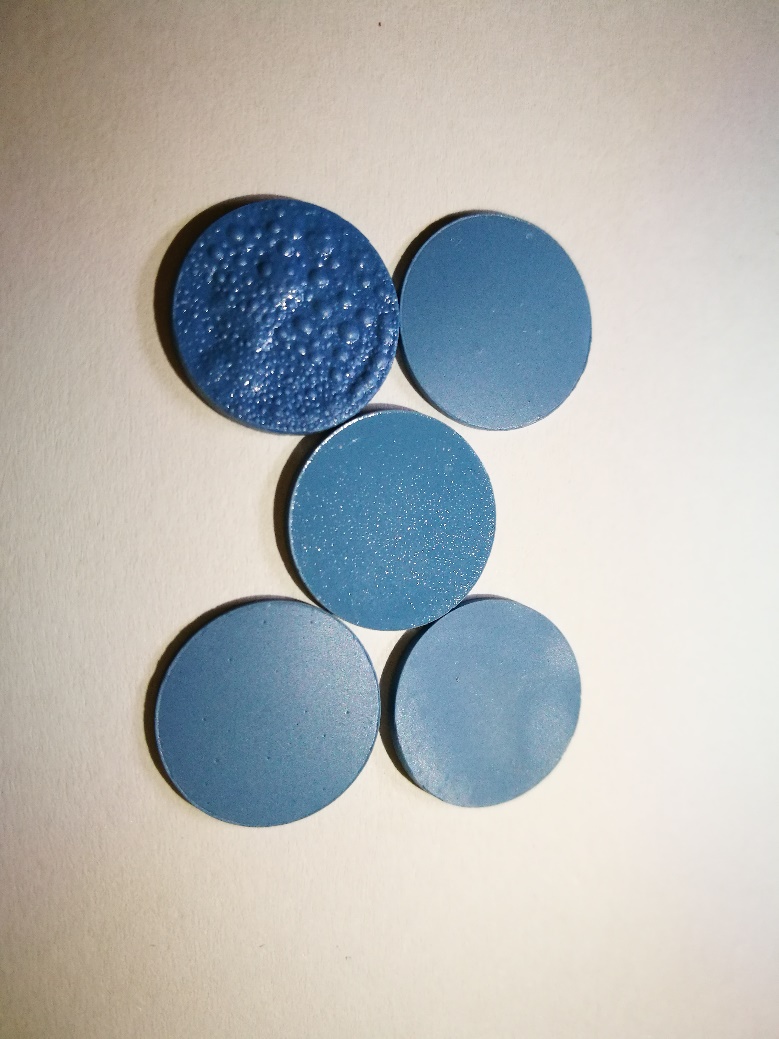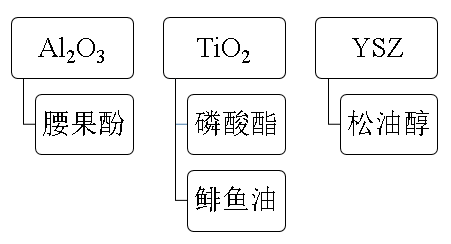不同陶瓷料对CBAS流延与烧结性能影响研究毕业论文
2020-04-18 19:58:57
摘 要
本文介绍了LTCC材料的发展现状,分析CBAS系流延工艺生产LTCC生瓷带的全过程,包括无机粉料的选择依据和四种主要有机助剂的作用机理。
从同种陶瓷不同粒径角度出发,研究了不同粒径Al2O3陶瓷料对CBAS系流延生瓷带的烧结、介电性能的影响,从不同种陶瓷角度出发,研究了CaTiO3陶瓷对CBAS系流延生瓷带的烧结、介电性能的影响,研究结果表明:Al2O3陶瓷的粒度过小或过大对生瓷带的密度、收缩率、介电常数和损耗均有不利影响,当Al2O3陶瓷的粒径为D50=3.25μm时样品最致密且介电常数和介电损耗达到最优,介电常数为8.5,10kHz下介电损耗为0.0025,且浆料在蓖麻油含量为2.5wt%时达到最小粘度,当CaTiO3含量为50%wt且在875℃下烧结时密度最大为3.2g/cm3, 介电常数为25.7,7GHz下介电损耗为0.0009。
关键词: LTCC CBAS 流延特性 烧结特性
Study on CBAS Tape casting and sintering
properties with different ceramics
Abstract
In this paper, the current development of LTCC material is introduced, and the whole procedure of producing LTCC green sheet by tape casting of CBAS material is analyzed, including the way of choosing inorganic powders and mechanisms of four types of organic additives.
The effect of different sizes of Al2O3 ceramic powder on sintering and dielectric properties of CBAS tape casting green sheet is researched by controlling the particle size. The effect of CaTiO3 ceramic powder on sintering and dielectric properties of CBAS tape casting green sheet is researched. As the result shows that the green density, shrinkage and dielectric constant and loss cannot reach the best unless the particle is optimal, the sample of D50=3.25μm, with a dielectric constant of 8.5 and a dielectric loss of 0.0025 in 10kHz, is densest and has the best dielectric, which made the optimal slurry for tape casting with 2.5wt% of castor oil, the sample of CaTiO3wt%=50%, with a dielectric constant of 25.7 and a dielectric loss of 0.0009 in 7GHz, reaches densest=3.2g g/cm3 at a sintering temperature of 875℃.
Key words: LTCC CBAS tape casting property sintering property
目 录
摘要 I
Abstract II
第一章 绪论 1
1.1 LTCC概述 1
1.1.1 低温烧结的意义及方式 1
1.1.2 流延成型工艺 2
1.1.3 粉料 3
1.1.4 溶剂 5
1.1.5 分散剂 7
1.1.6 粘结剂 9
1.1.7 塑化剂 10
1.2 LTCC发展与应用 11
1.3 论文的提出和研究意义 11
第二章 实验部分 13
2.1实验步骤 13
2.1.1 以不同粒径Al2O3为陶瓷料制备无机粉料 13
2.1.2 以CaTiO3为陶瓷料制备无机粉料 13
2.1.3 制备流延浆料 14
2.2 表征与测定 15
第三章 数据处理与讨论结果 16
3.1 以不同粒径Al2O3为陶瓷料 16
3.1.1 Al2O3粒度分析 16
3.1.2 密度、收缩率分析 17
3.1.3 介电性能分析 20
3.1.4 流延性能分析 21
3.2 以CaTiO3为陶瓷料 22
3.2.1 XRD, 密度分析 22
3.2.2 介电性能分析 24
第四章 结论与展望 26
参考文献 27
致 谢 30
第一章 绪论
无线通信与计算机领域,5G技术正在不断发展,需要科学家们在高频信号传输领域做出更多的努力,这就要求材料具备高信号传输速率、稳定性好、成本低廉,具有低介电常数的低温共烧陶瓷封装已经开始研发,低温共烧陶瓷对材料的要求很高,希望材料的烧结温度更低,品质因数更高。据报道,CBS(CaO-B2O3-SiO2)玻璃/Al2O3复合陶瓷由于满足力学、电学和热学性能要求,在微电子封装领域颇具应用前景[1-2]。
1.1 LTCC概述
所谓低温共烧陶瓷(LTCC, Low Temperature Co-fired Ceramic),便是指在烧结过程中,烧结温度低于1000℃的陶瓷体系,不同于一般烧结温度较高的陶瓷体系,低温共烧陶瓷由于烧结温度低于1000摄氏度,因此可以使用低电阻的导体作为介质,如金和银。同时,较高的导电性能使得电子元器件模块间的信号传输速率大大提升,同时减小能量损耗。因此在电子元器件方面具有广泛应用前景[3]。

以上是毕业论文大纲或资料介绍,该课题完整毕业论文、开题报告、任务书、程序设计、图纸设计等资料请添加微信获取,微信号:bysjorg。
相关图片展示:











